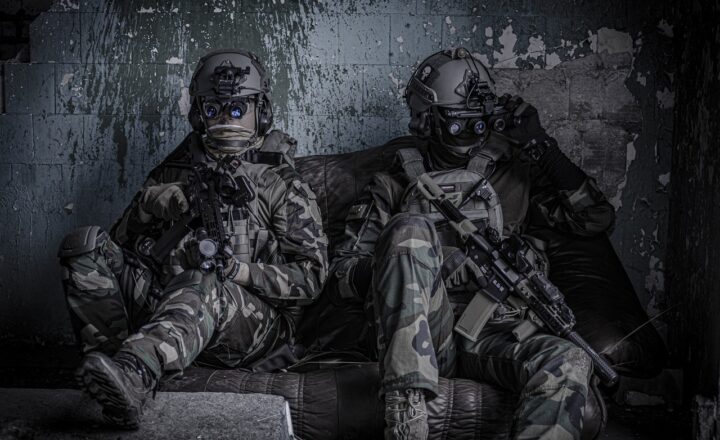
Civil-military relations can be defined as the interactions between civilian authorities and the military establishment, which plays a crucial role in shaping governance, security policy, and overall political stability. Particularly during times of conflict, these relations become more complex as they influence decision-making, policy implementation, and the relationship between the state and its citizens. In this article, we will explore the significance of civil-military relations and their impact on balancing power during conflicts, with real-world examples and potential implications for the future.
1. Understanding Civil-Military Relations
To grasp the importance of civil-military relations during conflicts, it is essential to first understand what these relations encompass. The military is charged with the responsibility of protecting the state and its citizens, while civilian authorities are meant to guide the military by formulating policies that reflect the will of the people. The balance of power between civilians and the military is crucial, as it determines how resources are allocated, how laws are enforced, and how conflicts are resolved.
Civil-military relations can be categorized into three key frameworks:
- The Objective Model: This framework advocates for a clear delineation between civilian and military roles, grounded in democratic ideals and the rule of law. Here, the military obeys civilian leadership while maintaining its professional integrity.
- The Subjective Model: This suggests a more integrated relationship where the military holds significant sway over political decisions, often leading to a blurred line between civilian control and military dominance.
- The Intermediate Model: This model recognizes a symbiotic relationship, with both military and civilian authorities influencing one another, allowing for teamwork in the face of conflict but also presenting risks of military overreach.
The dynamics of these frameworks manifest distinctly during conflicts, often determining the outcome in terms of governance, national unity, and public safety.
2. The Impact of Civil-Military Relations During Conflicts
Conflicts can catalyze shifts in civil-military relations, which in turn affect how effectively a nation can navigate through crises. The effectiveness of civil-military relations during these periods often dictates the success of a nation in achieving stability or falling into disarray.
Here are some key impacts of these relations during conflicts:
- Policy Making: In times of conflict, military leaders may become influential policy-makers, contributing strategic insight that civilian leaders may lack. A robust civil-military relationship enables a broader policy response, benefitting from military expertise while ensuring accountability to civilian authorities.
- Resource Allocation: The division of resources, such as funds and personnel, becomes critical during conflicts. Strong civil-military relations can ensure that the military receives necessary resources while providing transparency to civilian oversight, preventing misuse of power.
- Public Trust and Legitimacy: When civilians support the military and believe it upholds democratic values, public trust in both institutions can increase. Legitimacy is crucial for conflict resolution and maintaining order. An established civil-military relationship fosters an environment in which citizens feel secure in the government’s capabilities to address threats.
- Conflict Resolution: Effective civil-military dialogue can lead to quicker conflict resolution as both entities collaborate to find common ground amidst crises. Establishing communication ensures that the military remains aligned with the goals and interests of the civilian population.
The historical case of Colombia serves as a poignant example of how civil-military relations influence conflict. The Colombian Military, initially perceived as heavy-handed, underwent a transformation to align more closely with civilian authorities, ultimately leading to greater security and national stability amid decades-long internal conflict.
3. Case Studies of Civil-Military Relations During Conflict
Examining real-world instances can elucidate how civil-military relations have played decisive roles in conflict scenarios. Below are two notable cases:
a. The United States and the Gulf War
During the Gulf War of 1990-1991, the U.S. military operation demonstrated effective civil-military relations that provided a template for success. The military leadership consulted with civilian authorities to ensure strategic objectives aligned with political goals. The transparency and collaboration between the Pentagon and the White House enabled swift decision-making, resulting in a decisive military victory while maintaining public support and trust in government.
b. Myanmar’s Military Influence
In contrast, Myanmar offers an example of detrimental civil-military relations. The military has historically wielded significant control over civilian governance, undermining democratic structures. Despite attempts at reform, conflicts arise, which are exacerbated by the military’s prevalent influence over civilian authorities. The disconnect between civilian leadership and military command has rendered Myanmar vulnerable during conflicts, prompting public unrest and humanitarian crises.
These contrasting cases illuminate the necessity of balanced civil-military relations, particularly in conflict scenarios, where unity can be the differentiator between success and failure.
4. The Future of Civil-Military Relations in Conflict Situations
The landscape of civil-military relations is poised to evolve as societies become increasingly complex. Understanding its dynamics during conflicts is crucial for enabling effective governance and security responses. Several trends suggest how these relations may shift in the future:
- Increased Civilian Oversight: Due to rising demands for accountability and transparency, there will be a push to enhance civilian oversight over military operations. This shift can strengthen democratic principles and curtail instances of military overreach.
- Technological Integration: As conflicts increasingly leverage technology, the military’s role will become more specialized, which raises the need for civilians to understand military tactics and technology. Training programs could become essential to bridge gaps in understanding and enhance collaborative capacity.
- Globalization of Security Issues: With transnational threats on the rise, civil-military relations will need to navigate diverse security challenges that transcend borders. Cooperation between countries may lead to more collaborative approaches to conflict resolution, advocating for strong civil-military ties internationally.
Ultimately, the adaptability of civil-military relations will dictate how effectively nations respond to emerging conflicts, either fostering peace or perpetuating violence.
Conclusion
Civil-military relations are a fundamental pillar for maintaining balance during conflicts. Understanding how these relations evolve and influence decision-making is critical for securing democratic governance and effective military operations. As history has shown, the effectiveness of these relationships not only determines immediate outcomes during conflicts but also shapes the long-term stability and legitimacy of states.
In times increasingly characterized by conflict and ambiguity, fostering healthy civil-military relationsc will prove vital for sustaining peace, security, and democratic governance. As civil and military entities learn to collaborate efficiently, we can hope for improved conflict resolution strategies that prioritize the collective interests of society and enhance the legitimacy of both institutions.






